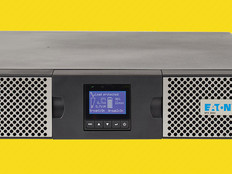5 Pointers for Backing Up Mobile Devices
Although most I.T. departments regularly back up network shares, servers and desktop computers, mobile devices sometimes fall into a gray area. Users are encouraged to back up their data when they can, and IT hopes for the best.
But alarmingly few users follow through with any regularity. Time constraints, forgetfulness and good, old-fashioned complacency usually win out, resulting in panicked calls to the help desk the minute a machine starts booting to that familiar blue screen — or worse, the black one that says "invalid boot device."
Before disaster strikes your remote users, consider taking these steps to make backups easier and therefore more likely.
1. Start Somewhere
Get users off on the right foot: When building system images, create and save a backup set using the Microsoft Windows Backup utility, and provide clients with a removable storage device, such as a USB flash drive. Train users to load the backup set, make any needed changes and then invoke manual backups. Make sure users understand that backing up their data is their responsibility, and encourage them to do so on a weekly basis.
2. Know the Drawbacks of Online Backup Services
Given the low cost of storage and the convenience of the cloud, online file-sharing and backup services have become increasingly popular. These services will tax your organization's bandwidth during synchronization. Mobile users additionally might discover that important data once readily accessible has suddenly become inaccessible when they arrive at a location that is behind the organization's Internet filter.
3. When Practical, Use Mobile Phones for Backup Storage
Consider this backup avenue: Users almost always have their mobile phones with them. Data cables are inexpensive (microUSB cables typically are less than $10), and many notebooks come with Bluetooth-enabled communications. Given these ready means of transport and the fact that most smartphones have the ability to be used as USB mass storage devices, clients already have what they need to back up their systems on well-accounted-for media.
Additionally, several popular mail clients can be configured to wipe the SD card in the event of a termination, letting your IT department secure sensitive information even after it walks out the door.
4. Don't Run Scheduled Backups for Mobile-Only Systems
Given the dynamic nature of mobile computing, schedules often result in missed events for notebook-only users, requiring compulsory catch-up the next time a user boots the machine. This not only gets in the way, but the user will most likely cancel these "catch-up" events at every turn. Instead, set reminders in client's mail calendars and provide removable media for on-demand use.
5. For Home Users, Consider External Hard Drives
Any remote worker who regularly works from a home office has the advantage of site consistency. Because of this, an external hard drive might be the best option. Not only do such drives provide adequate backup capacity, but many popular brands come with built-in utilities that allow for granular customization of backup settings.
Unlike mobile-only devices, machines that users dock often should be scheduled to run backups automatically. This can be configured either through the manufacturer-provided utility or through the built-in backup utility that comes with most versions of Windows.








